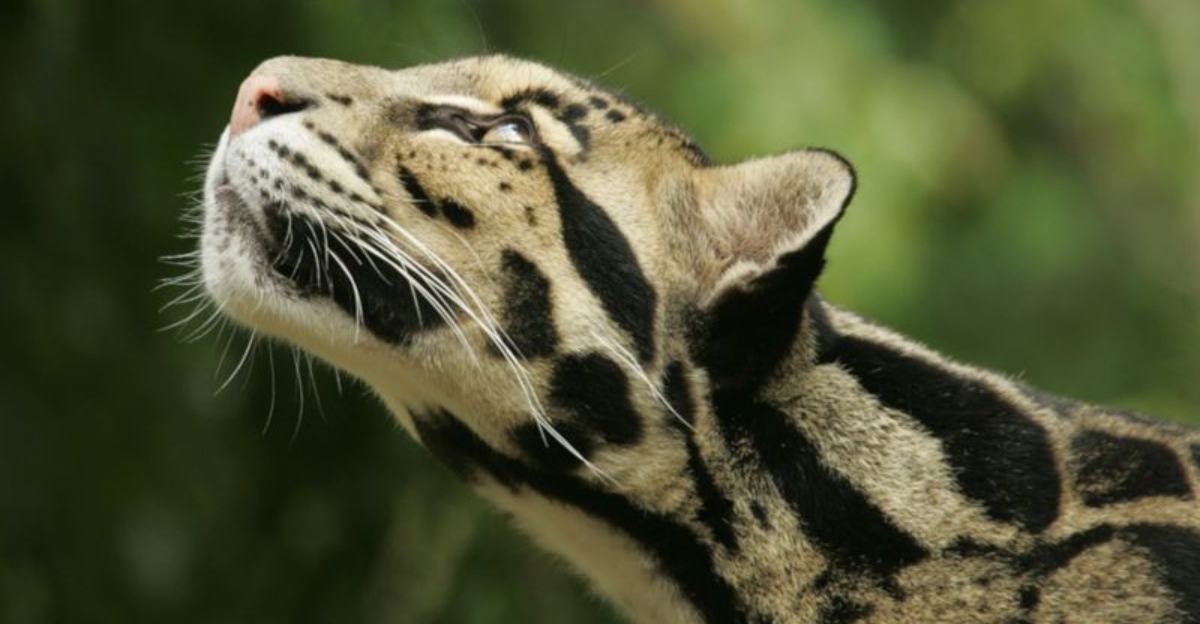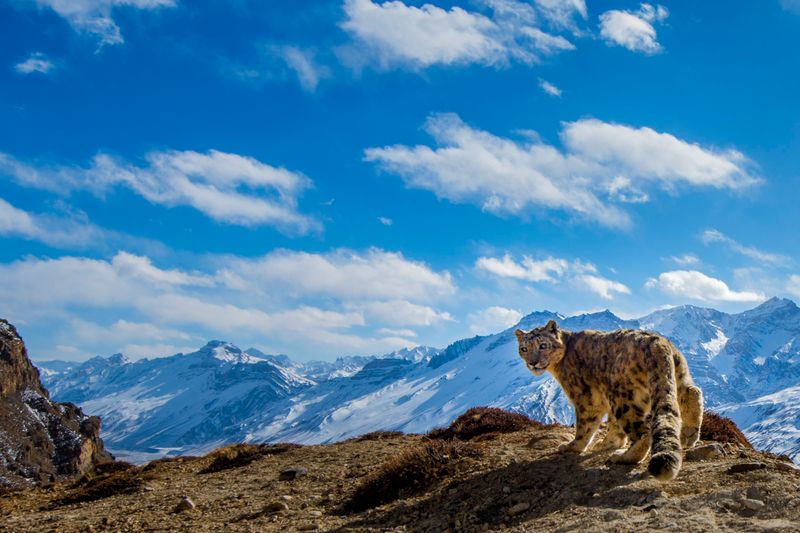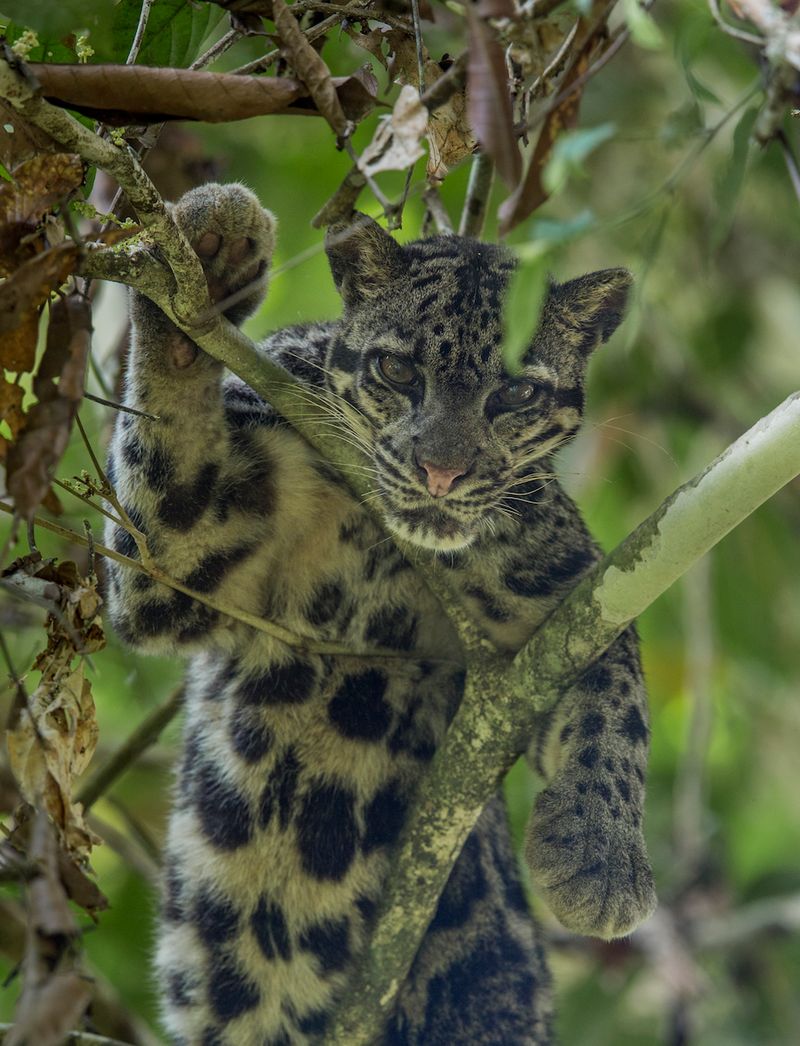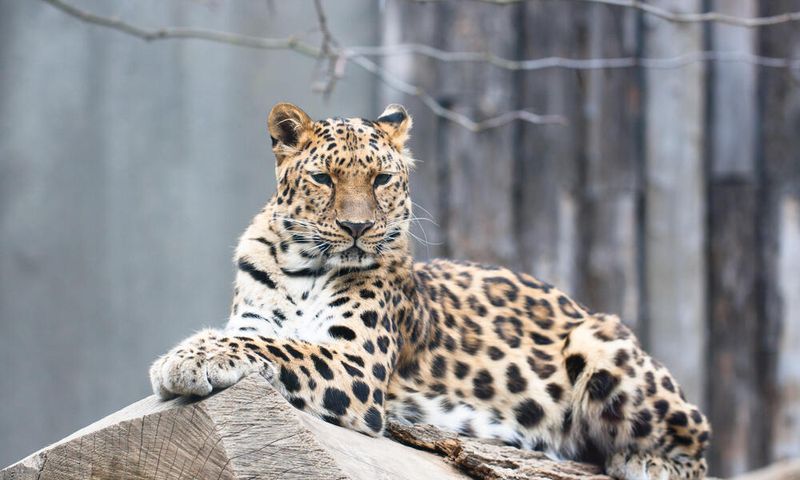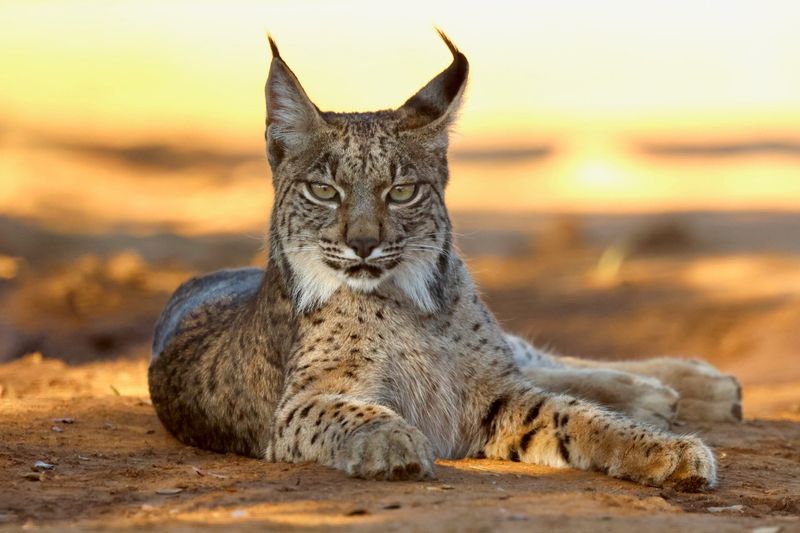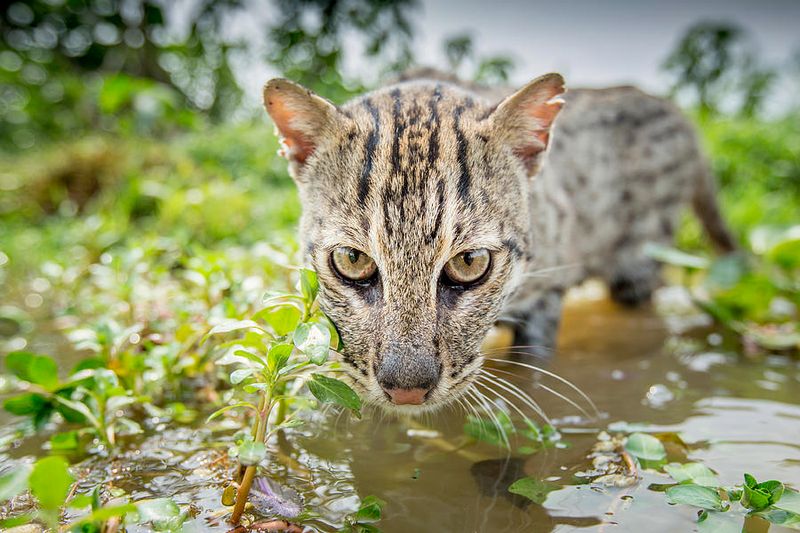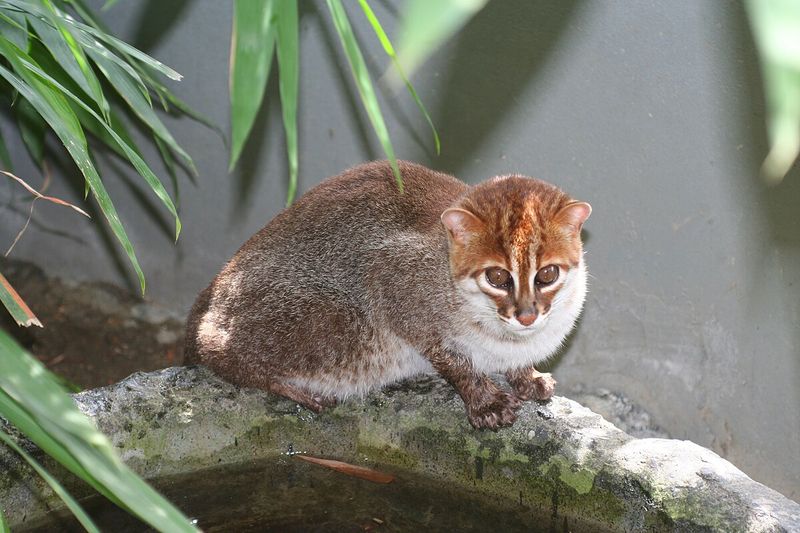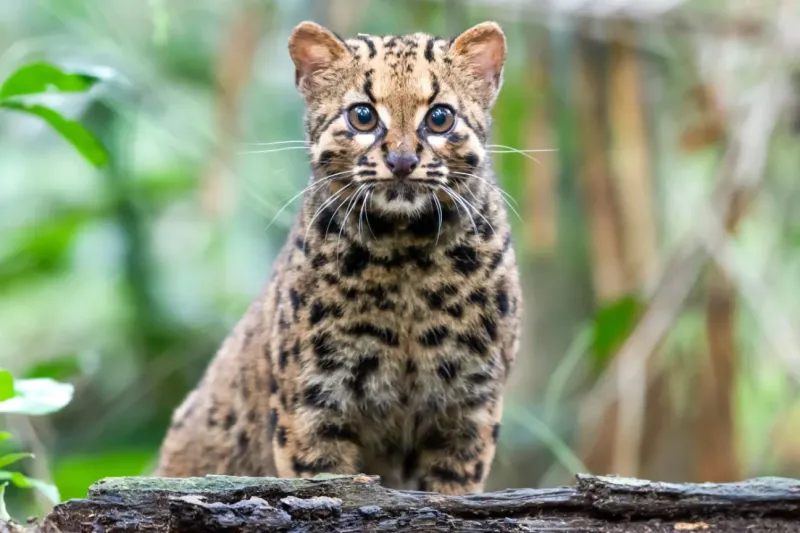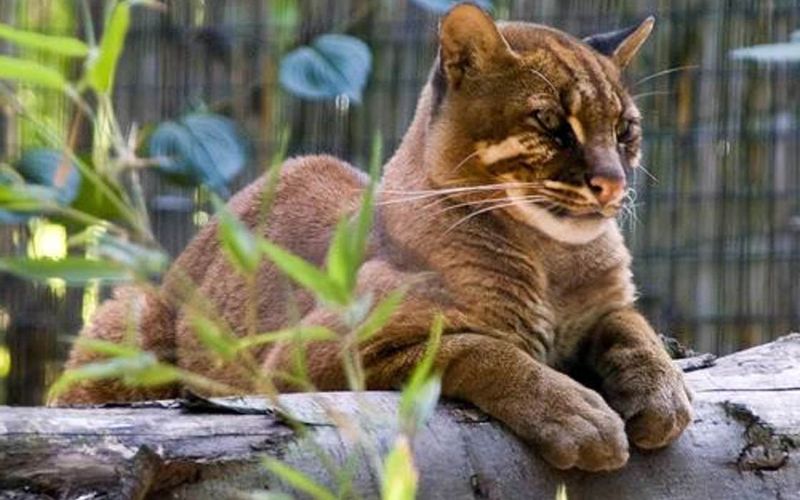📖 Table of Content:
Big cats stand as some of the most formidable and captivating animals in the natural world. Their sheer strength, agility, and presence place them at the top of the food chain. Whether stalking prey or defending territory, their dominance is undeniable.
Each species has evolved specialized traits that enhance survival in its native habitat. Camouflaged coats, razor-sharp claws, and powerful muscles are just a few of the features that define these elite predators. Such adaptations are the result of millennia of evolution shaped by climate, terrain, and prey.
From dense jungles to arid plains, big cats thrive across diverse landscapes. Despite their power, many remain elusive and rarely seen in the wild. This blend of strength and mystery continues to inspire fascination and respect across cultures.
1. Snow Leopard
The ghost of the mountains roams the rugged terrain of Central Asia, rarely seen by human eyes. Snow leopards have evolved perfectly for life at high altitudes, with thick fur and wide paws that act like natural snowshoes.
These solitary hunters can leap up to 50 feet in a single bound! Their long, thick tails help them balance on steep slopes and provide warmth when wrapped around their bodies during sleep.
Scientists estimate fewer than 7,000 snow leopards remain in the wild, making them highly endangered. Their beautiful spotted coats have made them targets for poachers, while climate change threatens their mountainous habitats.
2. Clouded Leopard
Named for their distinctive cloud-like markings, these medium-sized cats occupy a unique evolutionary position between big and small cats. Clouded leopards possess the largest canine teeth relative to their skull size of any modern cat – proportionally matching those of extinct saber-toothed tigers!
Masters of the trees, they can climb down tree trunks headfirst and even hang from branches using their powerful tails. Their ankle joints can rotate, allowing them to climb down trees face-first.
Found throughout Southeast Asia’s forests, these elusive hunters face serious threats from habitat loss and poaching for their beautiful pelts and bones.
3. Amur Leopard
The rarest big cat on Earth survives in the frigid forests between Russia and China. With only about 100 individuals left in the wild, Amur leopards stand on the brink of extinction. Their thick spotted coats provide camouflage and warmth in their snowy environment.
These extraordinary cats can run up to 37 miles per hour and leap more than 19 feet horizontally. Unlike most cats, they don’t mind water and are excellent swimmers.
Each Amur leopard has a unique spot pattern, like a fingerprint. Conservation efforts have helped their numbers increase slightly in recent years, though they remain critically endangered due to poaching and habitat fragmentation.
4. Sunda Clouded Leopard
Once thought to be the same species as mainland clouded leopards, these island dwellers were only recognized as distinct in 2006. Found exclusively on the islands of Borneo and Sumatra, Sunda clouded leopards have darker, smaller cloud markings and a grayer coat than their mainland relatives.
Scientists know remarkably little about these secretive cats. They’re believed to be primarily nocturnal and arboreal, spending much of their time hunting in trees.
Deforestation for palm oil plantations represents their greatest threat. As the rainforests disappear, so do these mysterious cats, with fewer than 10,000 estimated to remain across their fragmented island habitats.
5. Iberian Lynx
Once widespread across Spain and Portugal, this distinctive cat with tufted ears and beard-like facial ruffs nearly vanished forever. By 2002, fewer than 100 Iberian lynx remained in the wild – making them the world’s most endangered cat species at that time.
These specialized hunters depend almost entirely on European rabbits for food. When disease decimated rabbit populations in the 20th century, the lynx faced starvation. Adult males establish territories of up to 11 square miles to ensure adequate hunting grounds.
Through intensive conservation efforts including captive breeding and reintroduction programs, their numbers have increased to over 400 today – a rare conservation success story.
6. Asiatic Lion
Unlike their African cousins who roam the savanna in groups, these majestic cats survive in just one small forest in western India. The entire world population of wild Asiatic lions – approximately 650 individuals – lives within Gujarat’s Gir Forest.
Physically distinct from African lions, Asiatic lions have a distinctive fold of skin running along their bellies and smaller manes on the males. They’re slightly smaller overall but equally powerful predators.
These lions faced near extinction in the early 20th century when only about 20 remained. Strict protection by the Indian government has helped their numbers recover, though genetic bottlenecking remains a serious concern for their long-term survival.
7. Fishing Cat
Breaking the stereotype that cats hate water, fishing cats are semi-aquatic hunters specializing in catching fish and crustaceans. Native to wetlands across South and Southeast Asia, these medium-sized cats have water-resistant fur and partially webbed feet for swimming.
Their hunting technique is fascinating to observe. They’ll either wade into shallow water to scoop out prey with their paws or dive completely underwater to catch fish in their jaws. Some have even been observed tapping the water’s surface to attract curious fish.
Wetland destruction for agriculture and aquaculture has dramatically reduced their habitat. Many local communities have never seen these cats despite living alongside them for generations.
8. Flat-headed Cat
Among the least-known felines on Earth, these small but remarkable cats have adapted specifically for aquatic hunting. Their flattened heads and unusually close-set eyes give them excellent underwater vision, while their sharp, backward-facing teeth are perfect for gripping slippery prey.
Native to lowland wetlands of Malaysia, Indonesia, and Thailand, flat-headed cats have webbed feet and can swim underwater with ease. They’re so specialized for wetland living that they rarely venture far from water.
Sadly, over 70% of their wetland habitat has been converted to palm oil plantations and human settlements. Scientists classify them as endangered, with fewer than 2,500 mature individuals left in increasingly fragmented populations.
9. Marbled Cat
Often confused with clouded leopards due to their similar cloud-patterned coats, marbled cats are actually much smaller – about twice the size of a house cat. Their exceptionally long tails, sometimes equal to their body length, help them balance during acrobatic movements through the forest canopy.
These tree-dwelling specialists rarely descend to the ground. Their large paws and flexible ankle joints allow them to run down tree trunks headfirst or hang from branches using only their hind legs.
Found in the dense forests of Southeast Asia, little is known about their behavior in the wild. Camera traps occasionally capture images of these secretive cats, but scientists have conducted very few direct studies of their ecology or social structure.
10. Borneo Bay Cat
Perhaps the most mysterious cat in the world, the Borneo bay cat was only photographed alive in the wild for the first time in 2003. Endemic to the island of Borneo, this medium-sized cat has a rich chestnut-red coat and is so rarely seen that scientists know almost nothing about its behavior or ecology.
Their extreme rarity makes the study nearly impossible. Most scientific knowledge comes from just a handful of specimens and camera trap photos. They appear to live only in deeply forested areas away from human disturbance.
Massive deforestation across Borneo threatens their survival before we even understand them. Experts estimate fewer than 2,500 mature bay cats remain, with numbers declining as logging and palm oil plantations fragment their habitat.
